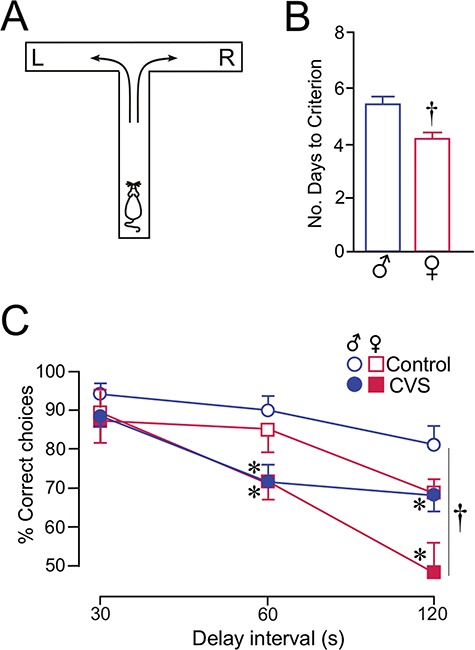Figure 2.

CVS impairs spatial working memory in both sexes. (A) Schematic diagram of the T maze (90 × 65 cm) used for delayed alternation. Rats are placed in the starting location (as shown) and were rewarded for selecting the opposite goal arm (e.g., right, R) from the previous trial (left, L). As the delay interval between each trial is increased, the percentage of correct choices provides a measure of spatial working memory. (B) Histogram shows the average number of days that males and females required to reach an equivalent level of performance in the delayed alternation task (≥80% choice accuracy at a 15-s delay). Female rats took fewer days to reach criterion than males (*, P < 0.05). N = 20–21/group. (C) Graph demonstrating the percentage of correct responses at increasing delay intervals. Behavioral impairments were noted as both a function of increasing delay interval and as a function of CVS (*, P < 0.05). Females performed at lower levels of choice accuracies at the 120-s time point (†, P < 0.05), although this showed no interaction with the effects of CVS (P = 0.3). N = 10–11 rats/group.
